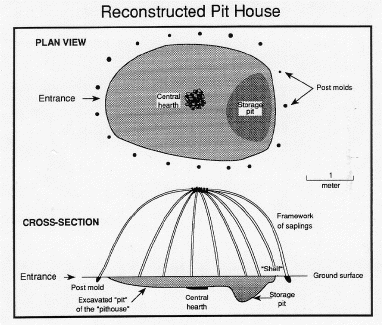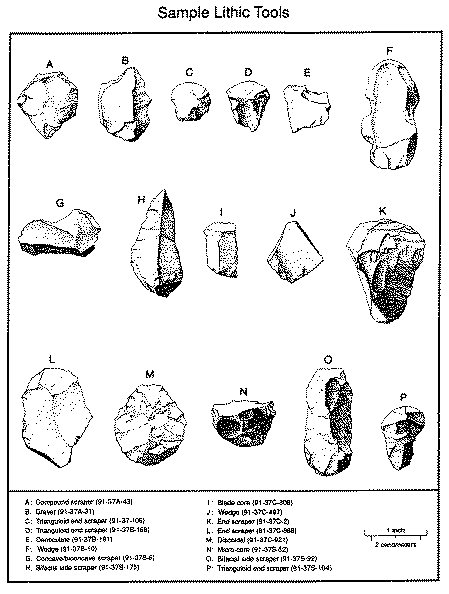Final Archaeological Investigations at the Pollack Prehistoric Site (7K-C-203), State Route 1 Corridor, Kent County, Delaware.
DelDOT Archaeology Series: No. 126
Custer, Jay F., Angela Hoseth, Barbara Hsiao Silber, David J. Grettler, and Glen Mellin
1995
Final Archaeological Investigations at the Pollack Prehistoric Site (7K-C-203), State Route 1 Corridor, Kent County, Delaware.
Prepared by the University of Delaware Center for Archaeological Research. Delaware Department of Transportation Archaeology Series No. 126.
The peninsula created by the confluence of the Leipsic River and Allston Branch was a great place for prehistoric people to camp. By about 1000 BC, rising sea water had entered the Leipsic River and created a brackish tidal marsh that held a great variety of foods. In the marsh grew wild rice, cattails, marsh mallow, and other edible plants, and around its fringes grew others, such as pigweed and lambs' quarter.

Fish swam in the water, birds filled the air, and the marsh attracted raccoons, muskrats, beavers, deer, and many other animals. Allston Branch provided a reliable source of fresh water. So it is hardly surprising that when archaeologists conducted test excavations they found a prehistoric archaeological site filling almost the entire 20-acre peninsula. The excavation of the site, described in this report, focused on areas of high artifact concentration, which were located close to either the Leipsic River or Allston Branch. Within this area groups of people camped at various times over the entire period from 8000 BC to AD 1600, although the site was most heavily used between 1000 BC and AD 1000. Two historic sites dating to the early 1700s were also found on the peninsula, and the excavation of these sites is described in DelDOT Archaeology Series No. 127.
Excavation of the prehistoric site was a massive undertaking. A total of 983 1x1-meter test units were dug, and, after the plowed soils were removed from selected site areas using a large trackhoe, 859 prehistoric pit features were excavated. Nearly 90 percent of these features were what the authors call "Type 1," which are D-shaped or semi-circular pits that average about 2 meters long, 1.2 meters wide, and 60 centimeters deep (6.5x4x2 feet). The authors interpret these features as storage pits that were originally part of semi-subterranean houses.

According to this view, which is controversial among archaeologists, the rest of the house pit was shallow and in
most cases has been destroyed by plowing. Other feature types included cylindrical storage pits
and hearths. Features were found throughout all the stripped areas, even those where no
artifacts had been found in the test units.

Reconstructed Pit House
Most of the artifacts found on the site were stone, including more than 400 tools and more than 10,000 waste flakes produced during the manufacture of stone tools. Given the size of the excavation, the artifact counts are actually rather low, since an average of about 6 artifacts were found in each feature excavated and 9 in each test unit. Among the identifiable projectile points were one Dalton-Hardaway, dating to about 8500 BC, several Kirks and Palmers (8000 to 7000 BC), bifurcate-based points (6500 to 6000 BC), Broadspears (2500 to 1000 BC), fishtails (1200 to 500 BC), teardrops (1000 to 500 BC), and small triangular arrowheads (AD 1000 to 1600). The most common were various stemmed and notched forms dating to the 3000 BC to AD 500 period. More than 100 prehistoric ceramic sherds were found, most of them small.

The archaeologists took a soil sample from each feature for flotation to find organic remains. The samples produced charred pieces of several food plants, included hickory nut hulls and seeds of pigweed, lamb's quarters, pokeweed, raspberry, and other plants. However, the samples also included seeds of introduced European plants, so some of the features had been contaminated by modern disturbances.









